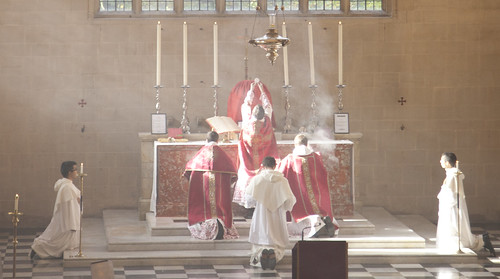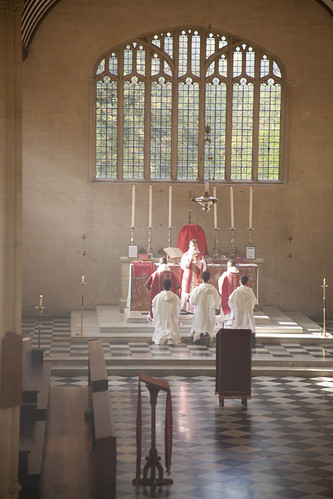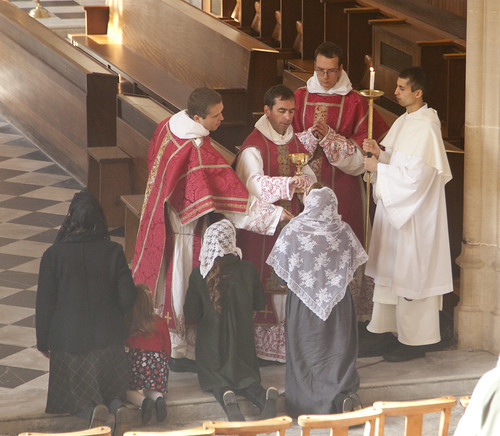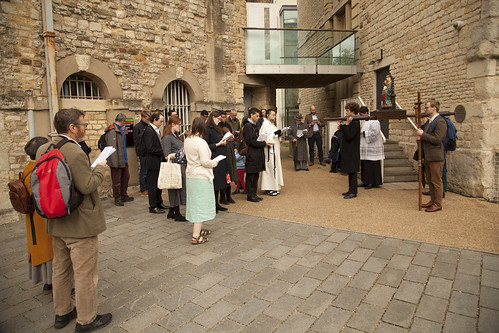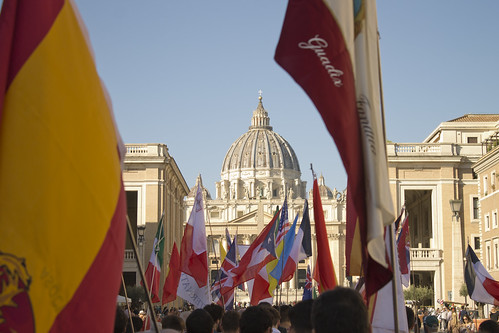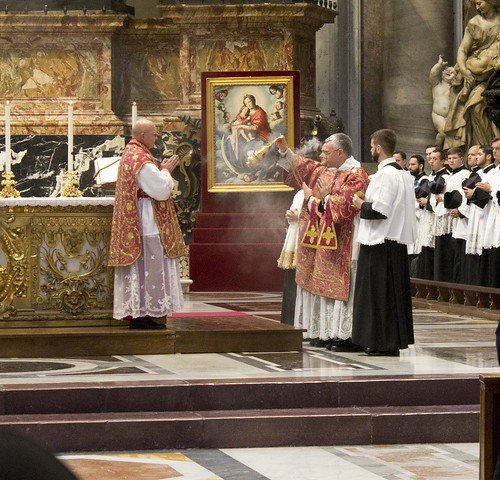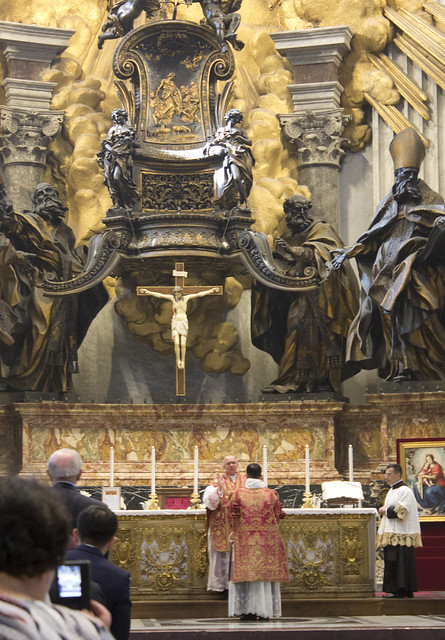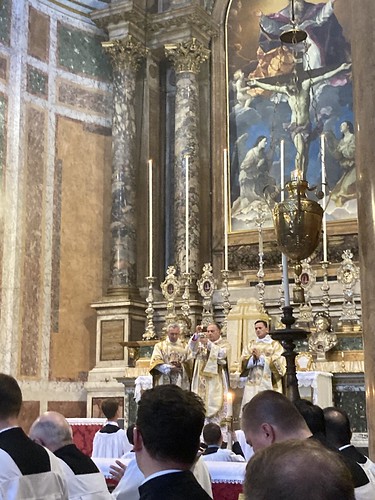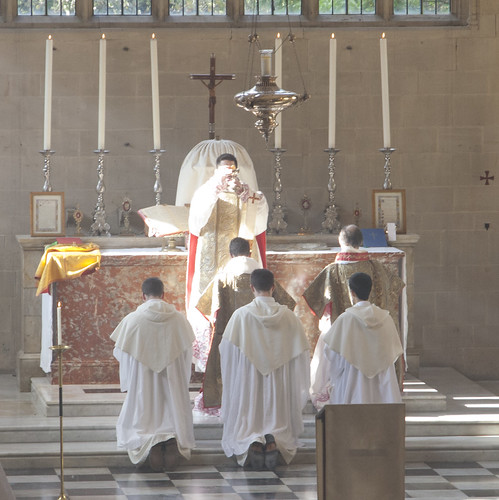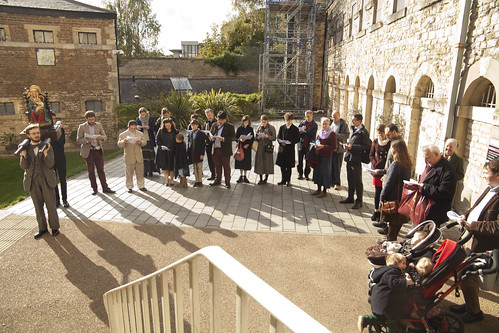Chairman's Blog
Oxford Pilgrimage 2022: photos
Pilgrimage to Rome
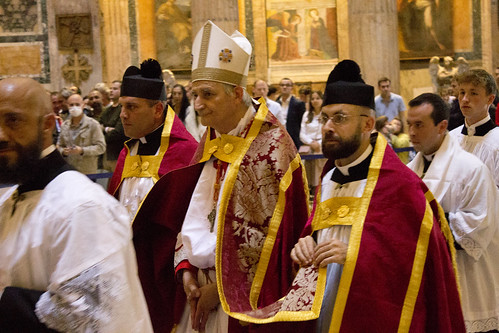 |
| Cardinal Zuppi processes into the Pantheon for Vespers |
The Summorum Pontificum Pilgrimage 'ad Petri Sedem' (to the seat of Peter) took place as usual this year, and with the personal permission of Pope Francies, Cardinal Matteo Zuppi, Archbishop of Bologna and President of the Italian Bishops’ Conference, officiated at the traditional Vespers in the Pantheon which began the Pilgrimage, and Monsignor Marco Agostini, one of the Pope’s Masters of Ceremonies, celebrated High Mass in the Chapel of the Throne in St Peter’s.
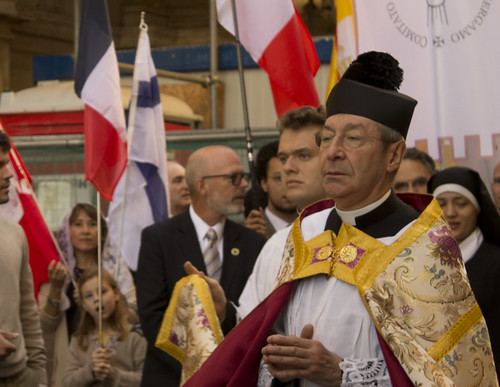 |
| Fr Claude Barthe, Chaplain of the Pilgrimage, about to lead the procession to St Peter's. |
 |
| Mgr Agostini (right), about to celebrate Mass in the Chapel of the Throne. |
Mass in St Peter’s was said to have been attended by 1,000 people, including 200 clergy in choir. That is to say, we filled the Chapel of the Throne to capacity: on the Epistle side the chairs stretched back continuously to the baldachino; on the gospel side space had to be left for the procession. Similarly, in contrast to past years, we are now largely filling the Pantheon for Vespers (620 people seated, rising to 1,000 if you include the people passing through the place during the service), and a large crowd had to wait in the road during Adoration at Santi Celso e Giuliano, which was completely full.
Iota Unum talks in London this autumn
The Iota Unum talks which take place in the basement at Our Lady of the Assumption, Warwick Street, are resuming for a brief autumn season.
24 Golden Square, London, W1F 9JR
LMS Pilgrimage to Oxford, Sat 22nd October
Latin Mass Society
Oxford Pilgrimage
Saturday 22nd October 2022
In honour of the Catholic Martyrs of Oxford,
visiting the site of the martyrdom of
Bl George Napier, 1610
11am Solemn Mass in the Dominican Rite,
in Blackfriars, St Giles’, Oxford, OX1 3LY,
2pm Procession to the site of the martyrdom in Oxford Castle, from Carfax
3pm Benediction in Blackfriars
Mass will be accompanied by Dominican Chant form the Schola Abelis, with
polyphony from the Newman Consort
under the direction of Alex Lloyd:
Taverner, Kyrie Le Roy
Tallis, Mass for Four Voices (Gloria, Sanctus, Agnus)
Offertory: Tye, Laudate nomen domini
Communion: Byrd, Ave verum
Photos from the last time we went to the site of Bl George Napier Martyrdom, 2019. After a break for Covid, we processed to the other site of martyrdom in 2021.
Support the Latin Mass Society
Requiem for Queen Elizabeth: some photos
Requiem for Queen Elizabeth this Saturday in London
A Traditional Latin Requiem Mass will be held in London this Saturday in memory of Her Majesty Queen Elizabeth II to mark a month since the death of the monarch.
The Sung Mass organized by the Latin Mass Society will be held at 11am at St Mary Moorfields church in the City of London. It will feature music by Tomas Luis da Victoria sung by the Southwell Consort directed by Gareth Wilson with the unusual accompaniment of Sackbutts and Cornetts.
Church location: 4-5 Eldon St, London EC2M 7LS; click for a map.
Nearest tube stations Moorgate and Liverpool Street.
Joseph Shaw, Chairman of the Latin Mass Society of England and Wales said
“Under the law of the Church, we can offer for the repose of the soul of the late Queen, as a baptized Christian, not only private prayers but also public Requiem Masses. Although many have already been said for her, we are following the longstanding custom of celebrating one exactly a month after her death, and we will do so with the greatest possible solemnity.”
All are welcome to attend. For further information email: info@lms.org.uk
Notes for Editors
The Latin Mass Society (England and Wales), founded in 1965, is an association of Catholic faithful dedicated to the traditional Latin liturgy of the Catholic Church, the teachings and practices integral to it, the musical tradition which serves it, and the Latin language in which it is celebrated.
Website : www.lms.org.uk
Please note we have moved:-
9 Mallow Street LONDON EC1Y 8RQ
Registered Charity Number: 248388
Contact: Clare Bowskill, Publicist: clare@lms.org.uk
Farewell to St Benet's Hall
 |
| A Traditional Requiem Mass offered in St Benet's Chapel |
Children, Rigidity and the Synod
 |
| Mass at the St Catherine's Trust Summer School in 2022 |
He takes a rattle in his hands and pretends that he’s ringing the Sanctus bells (kneeling down and saying “ring, ring”) and swings his hands in front of him in the act of censing (“chk, chk!”). Where I was hardly aware of – and even distracted from – what was taking place in front of me during (Novus Ordo] Children’s Mass, my infant son is inspired by the traditional liturgy, his imagination fueled with enough images, sounds, smells and actions to take him through the week.My conversation partners, formerly quite talkative, received this account with a stony silence and shifting brows – some rose, some furrowed. The pause was broken by Shona, who wanted to add another problem to our list: “You know, we had a priest in our parish who caused a few people to leave. He wouldn’t accept any change, you see, and didn’t connect well with the people, especially not with the children. He was very set in his ways.” And that was that.
 |
| The conclusion of the LMS Walking Pilgrimage to Walsingham 2022 |
Home Education meeting in Reading Saturday 1st October
From 10:30, 338 Wokingham Road, Reading RG6 7DA
Support the Latin Mass Society
A Muslim convert encounters the Traditional Mass
This piece on Rorate Caeli is worth reading. It is from the journal of the Fraternity of St Vincent Ferrer, Sedes Sapientia, which is now available in English translation for the first time.
When I attended my first traditional Latin Mass years later [after her conversion, first to Protestantism and then to Catholicism] in an old English church with dark walnut pews, that reverence I had experienced during my very first Mass reached a new height where the reason for those tedious [Old Testament] details about worship became clear. This was a God before whom I could kneel; a God who held our existence in his hands, yet chose to humble Himself to become one of us and suffer humiliation and death in love to save us from our own sinfulness.



